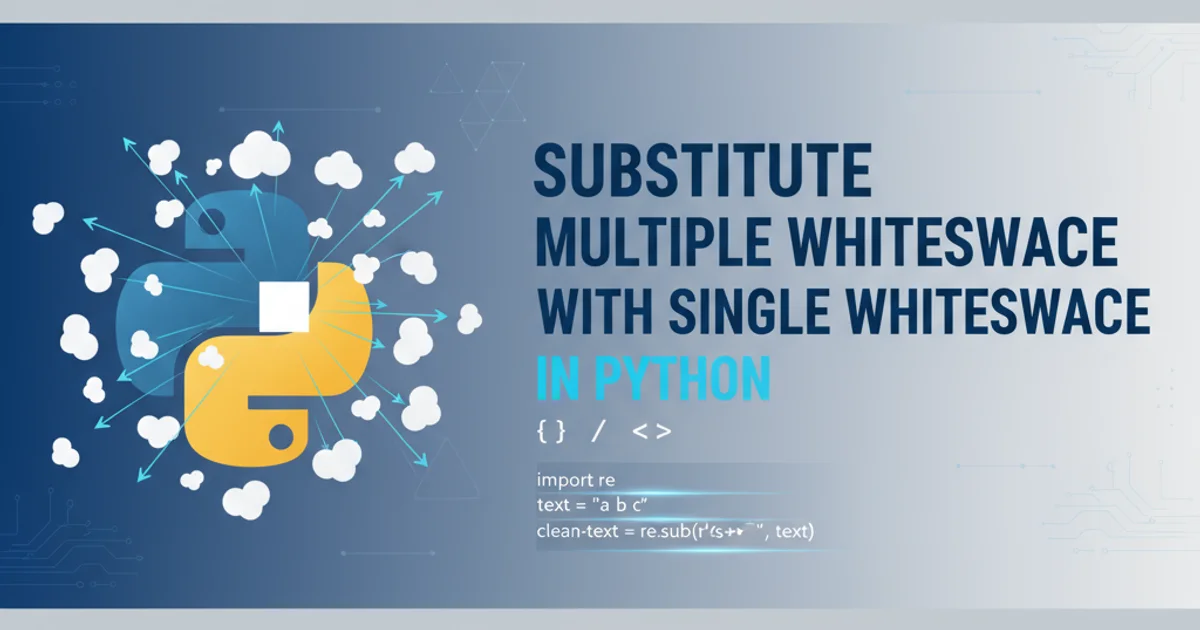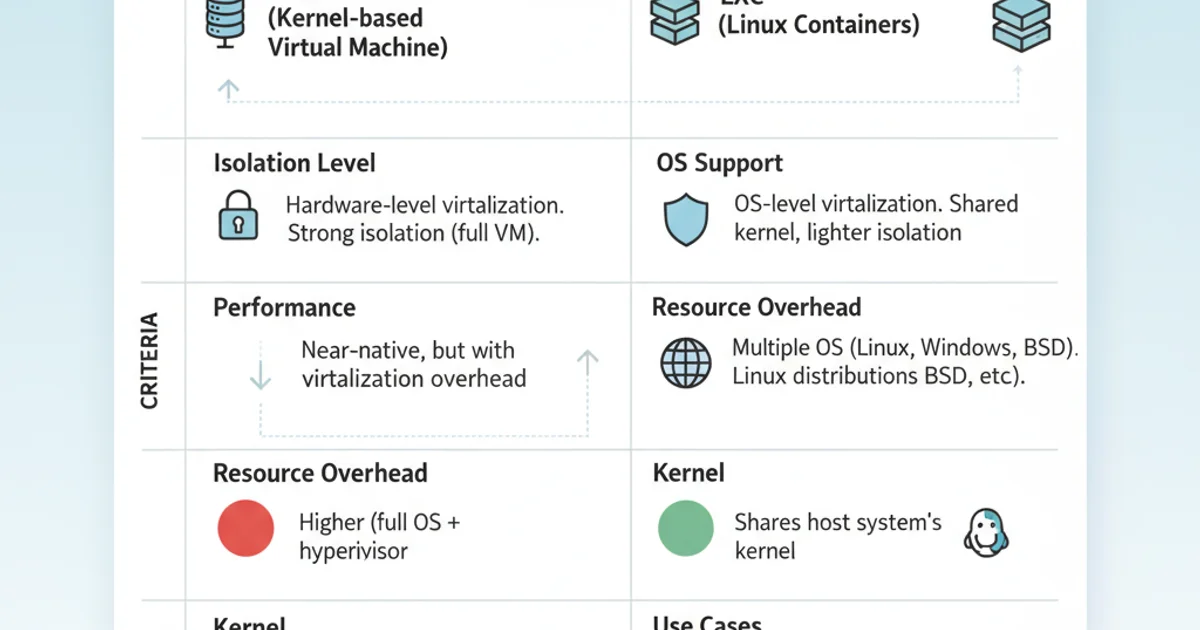Difference between KVM and LXC
Categories:
KVM vs. LXC: Understanding the Core Differences in Linux Virtualization

Explore the fundamental distinctions between KVM (Kernel-based Virtual Machine) and LXC (Linux Containers), two prominent virtualization technologies on Linux, and learn when to use each.
In the world of Linux, virtualization plays a crucial role in resource isolation, efficient deployment, and scalability. Two of the most widely used technologies for achieving this are KVM (Kernel-based Virtual Machine) and LXC (Linux Containers). While both aim to isolate environments, they operate on fundamentally different principles, offering distinct advantages and disadvantages. Understanding these differences is key to choosing the right solution for your specific needs, whether it's for server consolidation, application deployment, or development environments.
KVM: Full Virtualization with Hardware Assistance
KVM is a full virtualization solution built directly into the Linux kernel. It transforms the Linux kernel into a type-1 (bare-metal) hypervisor, allowing it to run multiple, isolated guest operating systems (VMs). Each KVM guest operates as a completely separate machine, with its own kernel, drivers, and allocated virtual hardware resources (CPU, memory, disk, network interfaces). KVM leverages hardware virtualization extensions (Intel VT-x or AMD-V) present in modern CPUs to achieve near-native performance for guest VMs.
graph TD
A[Hardware] --> B[Linux Kernel (Host OS + KVM Hypervisor)]
B --> C[QEMU/Libvirt]
C --> D[Guest OS 1 (e.g., Ubuntu)]
C --> E[Guest OS 2 (e.g., Windows Server)]
D --> F[Application 1]
E --> G[Application 2]
subgraph KVM Virtual Machine 1
D
F
end
subgraph KVM Virtual Machine 2
E
G
endKVM Architecture: Full Virtualization
LXC: Operating System-Level Virtualization
LXC, on the other hand, provides operating system-level virtualization, often referred to as containerization. Instead of virtualizing hardware, LXC creates isolated user-space environments (containers) that share the host Linux kernel. It achieves this isolation primarily through Linux kernel features like cgroups (control groups) for resource management (CPU, memory, I/O) and namespaces for isolating process trees, network interfaces, mount points, and user IDs. Because containers share the host kernel, they are much lighter-weight and start faster than KVM virtual machines.
graph TD
A[Hardware] --> B[Linux Kernel (Host OS)]
B --> C[LXC Daemon/Tools]
C --> D[Container 1 (Isolated User Space)]
C --> E[Container 2 (Isolated User Space)]
D --> F[Application 1]
E --> G[Application 2]
subgraph LXC Container 1
D
F
end
subgraph LXC Container 2
E
G
endLXC Architecture: OS-Level Virtualization
Key Differences and Use Cases
The core distinction lies in what they virtualize: KVM virtualizes hardware, while LXC virtualizes the operating system. This leads to several practical differences:

KVM vs. LXC: A Comparative Overview
Isolation and Security
KVM provides stronger isolation because each VM has its own kernel, memory space, and virtualized hardware. A compromise in one KVM guest is unlikely to affect the host or other guests. LXC containers share the host kernel, making them less isolated. While namespaces and cgroups provide significant isolation, a kernel-level exploit could potentially impact all containers.
Performance and Overhead
LXC containers are significantly lighter and faster to start than KVM VMs. Since they share the host kernel, there's less overhead. KVM, requiring a full guest OS boot and virtualized hardware, has higher overhead but offers near-native performance for CPU-intensive tasks due to hardware virtualization.
Operating System Support
KVM can run virtually any operating system that supports the underlying hardware architecture (Linux, Windows, BSD, etc.). LXC is limited to running Linux distributions, as it relies on the host's Linux kernel.
Resource Management
Both KVM and LXC use cgroups for resource management, but KVM manages resources for entire virtual machines, while LXC manages resources for individual containers, which are essentially isolated processes on the host.
Use Cases
- KVM is best for:
- Running multiple, diverse operating systems on a single physical server.
- Environments requiring strong security and isolation (e.g., multi-tenant hosting).
- Testing different OS versions or distributions.
- Legacy applications that require specific OS environments.
- LXC is best for:
- Lightweight, fast-starting application environments.
- Microservices architectures and CI/CD pipelines.
- Consolidating multiple Linux applications on a single host with minimal overhead.
- Development and testing environments where rapid deployment is crucial.
# Example: Creating a simple LXC container
sudo lxc-create -t download -n mycontainer -- \
--dist ubuntu --release focal --arch amd64
# Start the container
sudo lxc-start -n mycontainer
# Access the container's console
sudo lxc-attach -n mycontainer
# Example: Listing KVM virtual machines (using virsh)
sudo virsh list --all
Basic LXC and KVM (virsh) commands
In summary, KVM offers robust, full virtualization suitable for diverse OS environments and high isolation needs, while LXC provides agile, lightweight containerization ideal for Linux-based application deployment and development. The choice between them depends on your specific requirements for isolation, performance, and operating system flexibility.